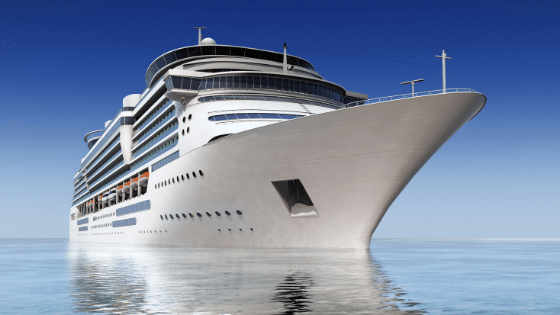Higher-strength ABS shipbuilding steel comes in six grades and two strengths. Kloeckner Metals routinely stocks AH36, DH36, EH36, and FH36.

ABS A131 AH36, DH36, EH36, and FH36 are defined as higher strength and these grades are certified by the American Bureau of Shipping (ABS), so that they can be used in shipbuilding. The different grades are offered in various condition.
AH36 is offered in the control-rolled condition, DH36 in both the control-rolled and normalized condition, and EH36 in the normalized condition.
ABS A131 AH36, DH36, EH36, and FH36 are higher strength steel plate grades that are only used in the shipbuilding industry.
ABS A131 AH36, DH36, EH36, and FH36 are only used in the shipbuilding industry and therefore some common applications are structural ship parts, barges and marine equipment.
AH36 is offered in the control-rolled condition, DH36 in both the control-rolled and normalized condition, and EH36 in the normalized condition.
ABS A131 AH36, DH36, EH36, and FH36 are higher strength steel plate grades that are only used in the shipbuilding industry.
ABS A131 AH36, DH36, EH36, and FH36 are only used in the shipbuilding industry and therefore some common applications are structural ship parts, barges and marine equipment.
ANSWER:
ABS stands for American Bureau of Shipping and indicates that the grade was certified by the Bureau.
ANSWER:
ABS ordinary-strength steel comes in a various number of grades, including A, B, D, E and F. Each of these grades have different alloy chemical ingredients and fracture toughness. ABS AH36, DH36, EH36, and FH36 are all higher strength grades.
ANSWER:
The ABS 32 grades, including AH32, DH32, and EH32, have a yield strength of 45,500 psi (315 MPa) and the 36 grades, including AH36, DH36, and EH36, have a yield strength of 51,000 psi (355 Mpa). The ultimate tensile strength of the 32 grades is 64,000 – 85,000 psi (440 – 590 MPa) and for the 36 grades it is 71,000 – 90,000 psi (490 – 620 MPa). In comparison, ABS A & B are defined as ordinary strength and have specified yield points of 34,000 psi (235 MPa) and ultimate tensile strengths of 36,000 – 71,000 psi (400 – 490 MPa). However, there are exceptions for greater thicknesses and certain sections.
ANSWER:
All ordinary-strength ABS steel grades have different alloy chemical ingredients as well as a different fracture toughness.
ANSWER:
ABS stands for American Bureau of Shipping and indicates that the grade was certified by the Bureau.
ANSWER:
ABS ordinary-strength steel comes in a various number of grades, including A, B, D, E and F. Each of these grades have different alloy chemical ingredients and fracture toughness. ABS AH36, DH36, EH36, and FH36 are all higher strength grades.
ANSWER:
The ABS 32 grades, including AH32, DH32, and EH32, have a yield strength of 45,500 psi (315 MPa) and the 36 grades, including AH36, DH36, and EH36, have a yield strength of 51,000 psi (355 Mpa). The ultimate tensile strength of the 32 grades is 64,000 – 85,000 psi (440 – 590 MPa) and for the 36 grades it is 71,000 – 90,000 psi (490 – 620 MPa). In comparison, ABS A & B are defined as ordinary strength and have specified yield points of 34,000 psi (235 MPa) and ultimate tensile strengths of 36,000 – 71,000 psi (400 – 490 MPa). However, there are exceptions for greater thicknesses and certain sections.
ANSWER:
All ordinary-strength ABS steel grades have different alloy chemical ingredients as well as a different fracture toughness.
Kloeckner’s metal roofing manufacturing showcases the flexibility,...
Steel base plates are fundamental elements employed in various manufacturing processes. These flat, rectangular...
Metal fabrication is a critical process that transforms raw metal materials into finished products....
The solar industry has undergone a significant transformation by incorporating steel products into various...
The unprecedented pace of solar growth is challenging and reforming America’s construction and engineering...
If you’ve got a roof over your head, it’s partly thanks to purlins. A...
Acquiring highly profitable company with annual sales of around USD 30 million Significant expansion...
A stainless steel depot is a specialized facility or supplier that stocks and provides...
American manufacturers use about 28.2 billion pounds of aluminum every year, 41.6% of it...
Leading steel distributor expands commitment to sustainability in the North American market. Kloeckner Metals,...
At Kloeckner, we are excited to announce that our Santa Fe Springs, CA location...

X
The Kloeckner Metals website uses modern technologies. Unfortunately, your browser doesn't support those technologies.
Download the latest version of one of these browsers to experience the site: